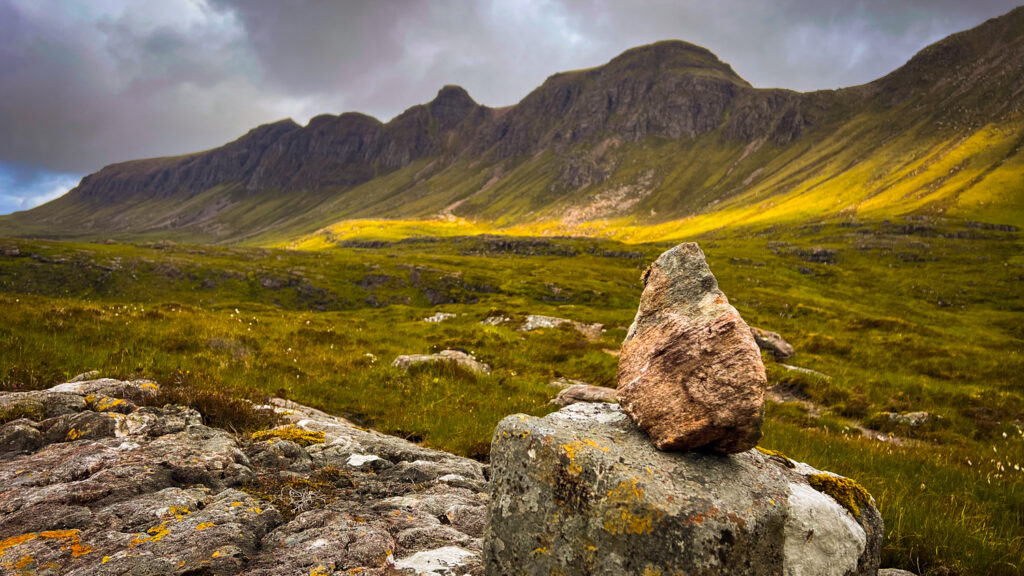
Gleann Leireag (aka Glen Leireag) is a hauntingly atmospheric and remote glen on the western flanks of Quinag. While most visitors to this area head for the hills, we set our sights on the glen itself, which stretches below the steep, crumpled bands of Torridonian sandstone that shape Quinag’s northern summits.
These trip notes share highlights from a point-to-point Gleann Leireag walk from Tumore, ending near Nedd at a small settlement marked Glenleraig on OS maps (two cars are helpful for this one). With its welcome diversity of flora and fauna, grand views of Quinag, and profound sense of remoteness, this is a choice low-level walk in Assynt, particularly if you value solitude and don’t mind a little bracken and bog…
Trip Essentials

- Starting / Finish Point: Start at the lay-by at Tumore (NC 1822 2667) and finish at the lay-by on the B869 (NC 1569 3137). Note: two cars are required!
- Total Distance: ~8 km
- Total Ascent: ~250m
- Terrain: Indistinct path to start, then a clear, sometimes boggy path, for the rest of the walk.
- Maps: Assynt & Coigach Harvey Map
- View GPX* on OS Maps
- View this route and more in our Interactive Route Map
* GPX data are taken from my own journey, tracked with a smart watch. I’ve provided this to give you some inspiration for your own journey, not as a rigorous guide (these routes often involve off piste sections, in which case your gpx data may look quite different!). You should always carry a paper map and compass as a backup. If you’re heading to the hills, make sure you or someone with you has solid map reading and navigation skills. Have a great time!
Field notes from Gleann Leireag
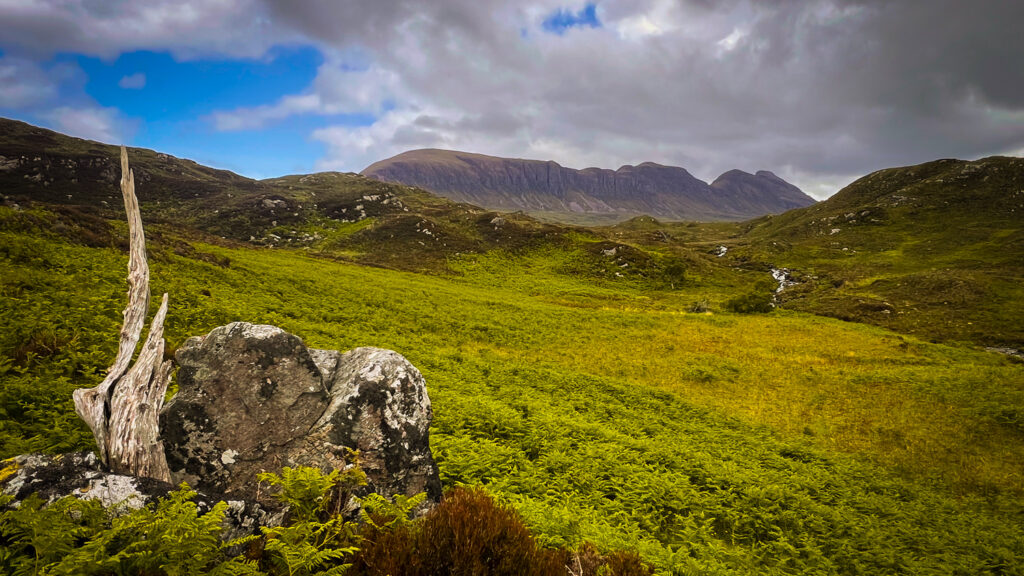
Gleann Leireag seems best known for the deserted township of Gleann Leireag at the head of the glen near Nedd. It was once a thriving crofting community, abandoned during the Highland Clearances. Excavations have revealed over 50 structures, including longhouses, sheep folds, and field systems, that you can spot on the south-facing slopes of Gleann Leireag.

The old settlement wasn’t our goal on this outing, but you can read about it in the Highland Historical Environment Record, or keep an eye on the Highland Rangers who sometimes do guided walks of this area.
Our eye was on the glen itself, starting at the lay-by in Tumore. On this June morning, the path at the start of the walk was entirely obscured in bracken. I’d been here before in winter and had recollection that we needed to circle around the back of the neighbouring house and over a burn. After a bit of bracken bashing, we found the intended path which remained clear for the rest of the journey (you can see our diversion in my GPX route!).
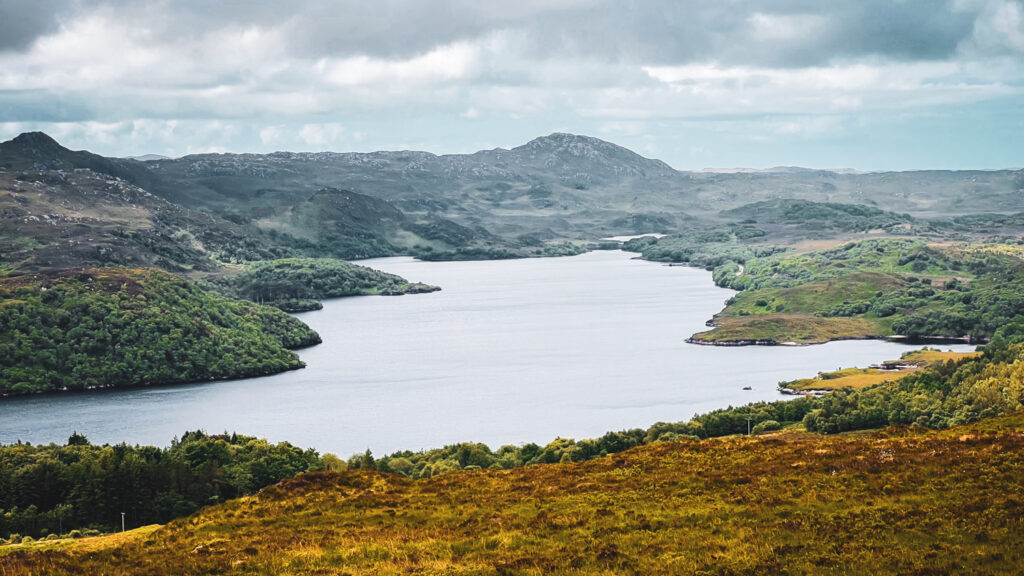
The journey from Tumore takes you uphill above Loch Assynt, which looked a little drab on this overcast morning. But that same drabness made the glen itself all the more astmospheric.
As we rounded Creag na h-lolaire, obvious for its steep-sided outcrops of Lewisian gneiss, and entered the Bealach Leireag, the whole vibe of the place changes. You feel like you’re entering the land that time forgot. You’re greeted by a tiny loch – a tempting swim spot. Quinag’s immense gnarly face looms over you. In the glen you’re surrounded by boulders (more of that gneiss), the sound of water from myriad burns, and a slim likelihood of seeing any other people. The only other sounds of life were the occasional skylark or meadow pipit (eagles are apparently also often seen in the area). There was an eerie serenity about it all.

My personal highlight was found underfoot, as June is prime time to discover wildflowers in this outwardly barren landscape. Some favourite observations – and lessons learned through iNaturalist, my plant ID app:
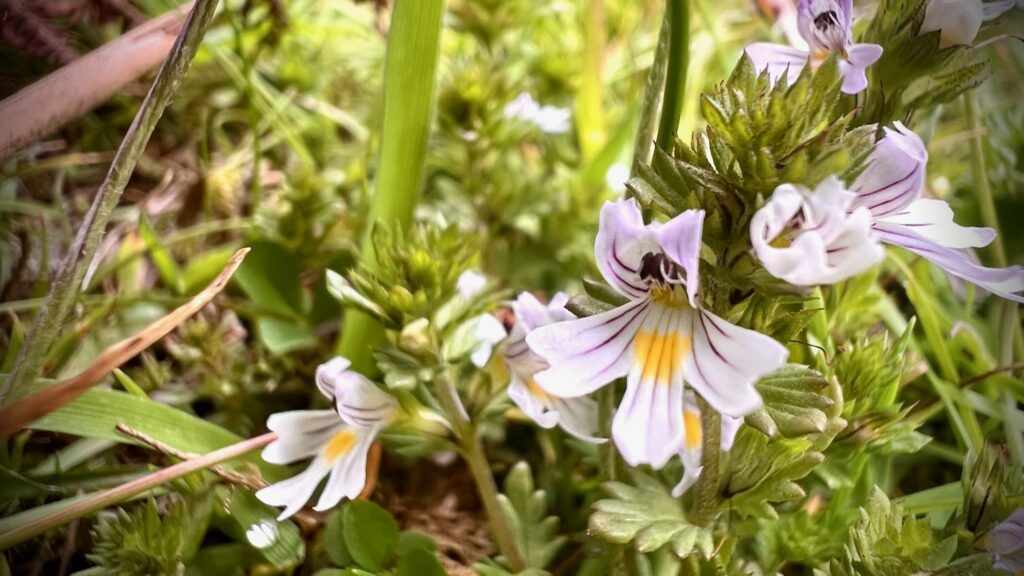
Eybrights (Euphrasia spp.), tiny TINY plants. But look closer! Their blooms are amazingly intricate and beautiful. Eyebrights grow in grasslands and heaths and are semi-parasitic, drawing nutrients from the roots of nearby grasses. Their dainty appearance belies a cunning strategy for survival. Traditional herbalists once used them to treat eye infections, hence the name.

St John’s Wort (Hypericum perforatum), for me the prettiest of the day. You may know it for its long use in traditional medicine, particularly as a herbal remedy for depression and wounds. It thrives in open grassy areas and disturbed ground. The leaves are dotted with translucent glands that glow when held to the light — hence its Latin name perforatum.
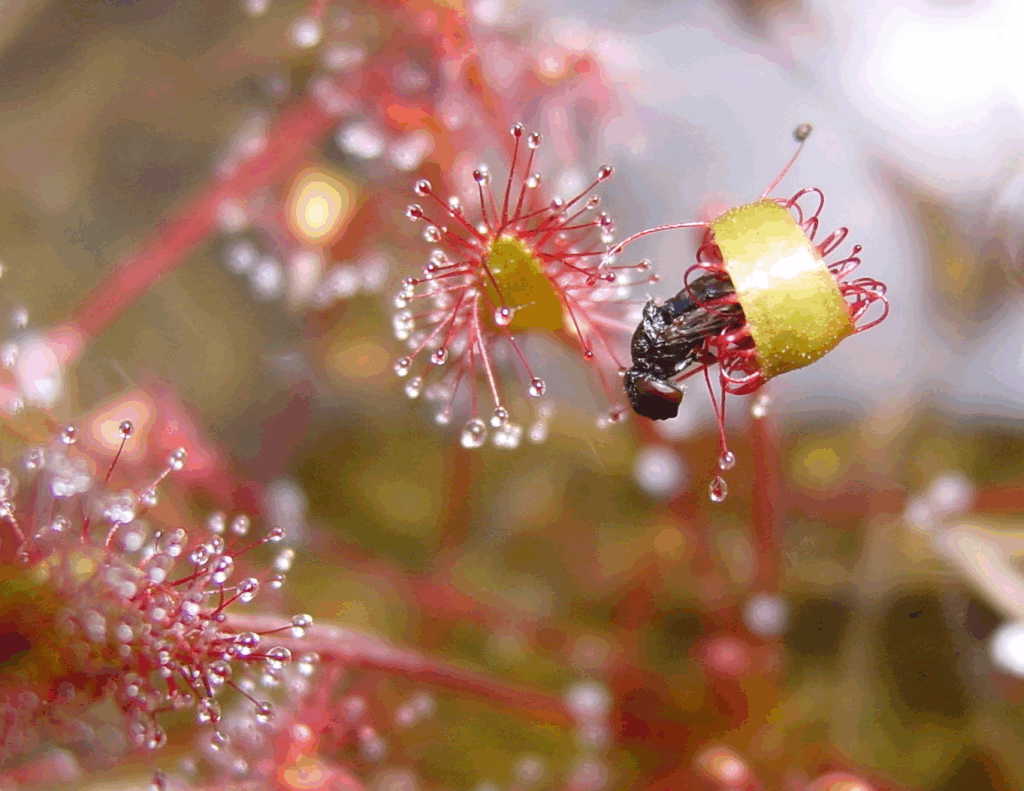
Great Sundew (Drosera anglica), a jewel of the bogs! And get this – it’s carnivorous! Great Sundew traps unsuspecting insects with its sticky, dew-covered hairs. The nutrients it absorbs supplement the poor, acidic soils where it grows. Watch closely — its tiny red tentacles glisten in the sun and curl dramatically when triggered by prey. It’s a remarkable adaptation to nutrient-starved environments (alas which much of Assynt is).
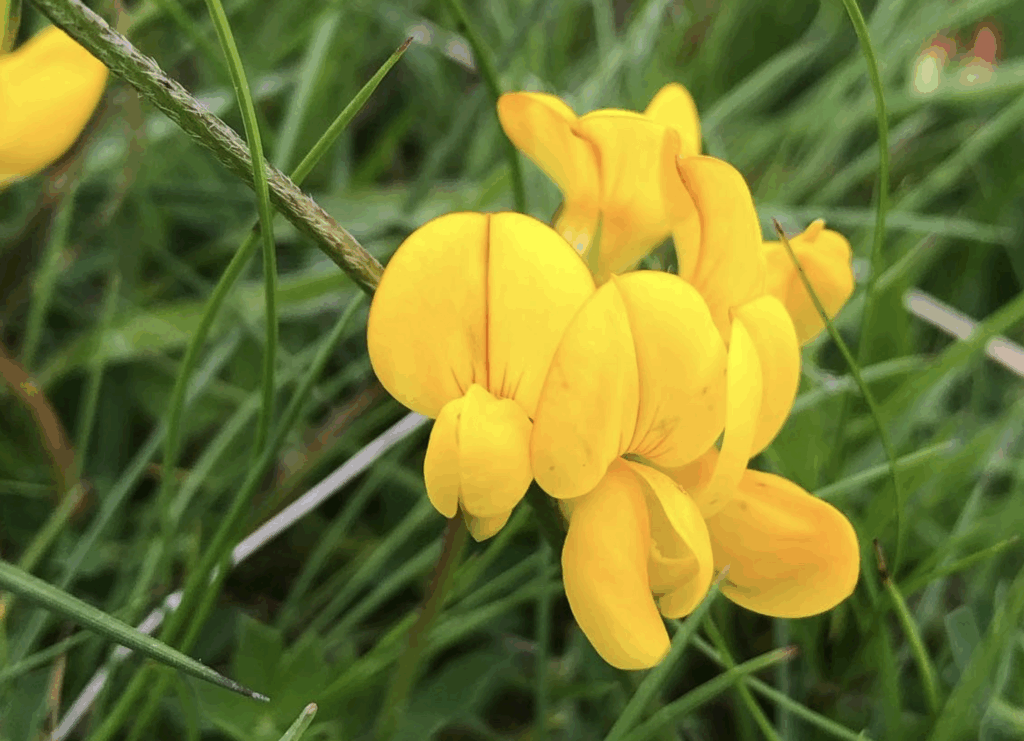
Bird’s-foot Trefoil (Lotus corniculatus), one of my favourite UK wildflowers common all over the place (including our back garden at home), but it’s always cheerful to see. It’s also known as “eggs and bacon” due to its yellow and red-tinged flowers. , this common wildflower is an important nectar source for bees and butterflies. It’s a nitrogen fixer, improving the soil, and its distinctive seed pods resemble a bird’s foot — hence the name.
Glen Leireag wildflower gallery
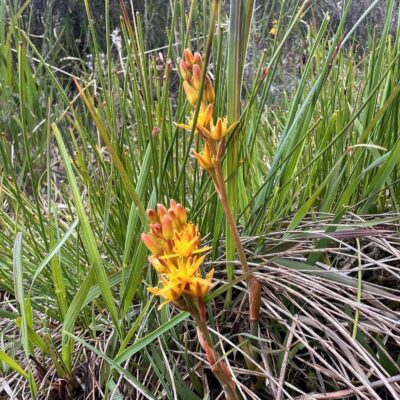
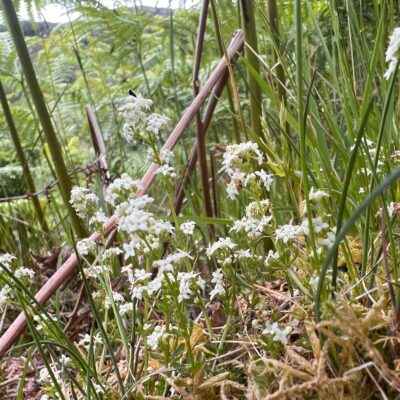
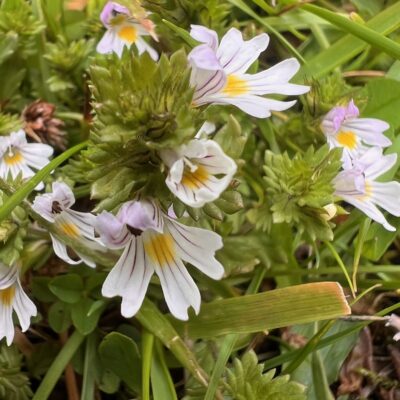
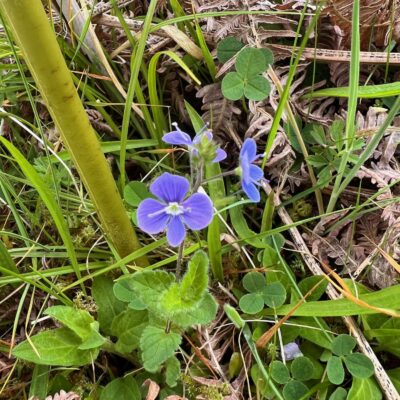
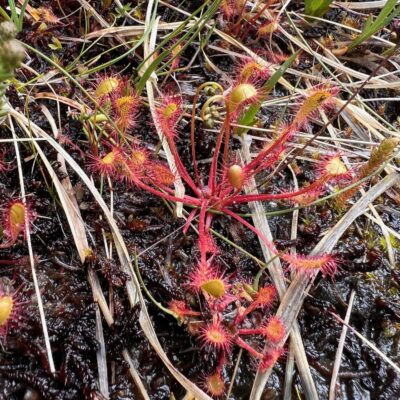
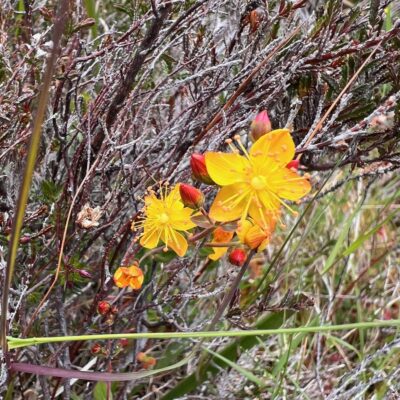
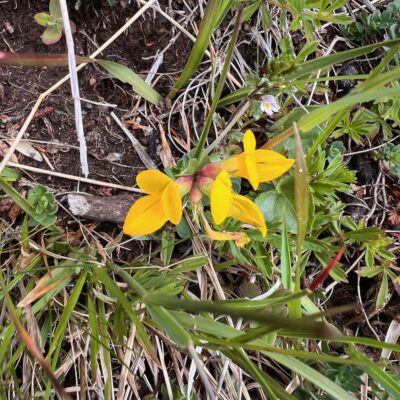
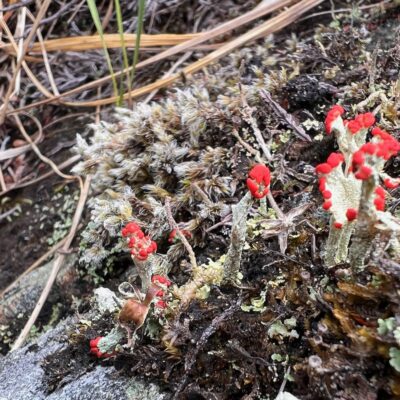
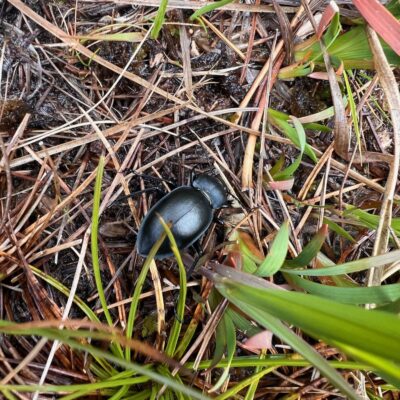
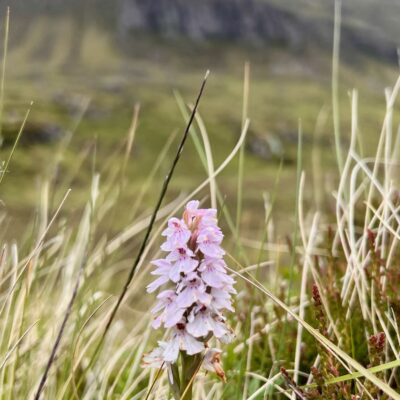
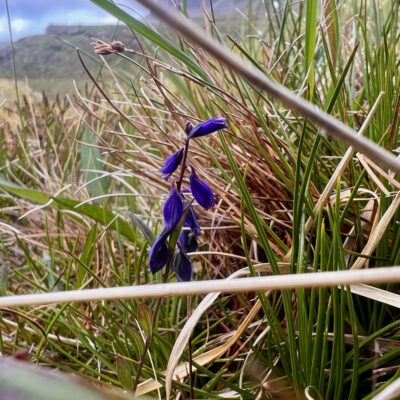

You can find more accounts of the nature of Gleann Leireag in this walk report by the Assynt Field Club who aptly describe the area as “plodgy”.
For a more wintery account of this glen, check out our winter walk up Quinag from Gleann Leireag.
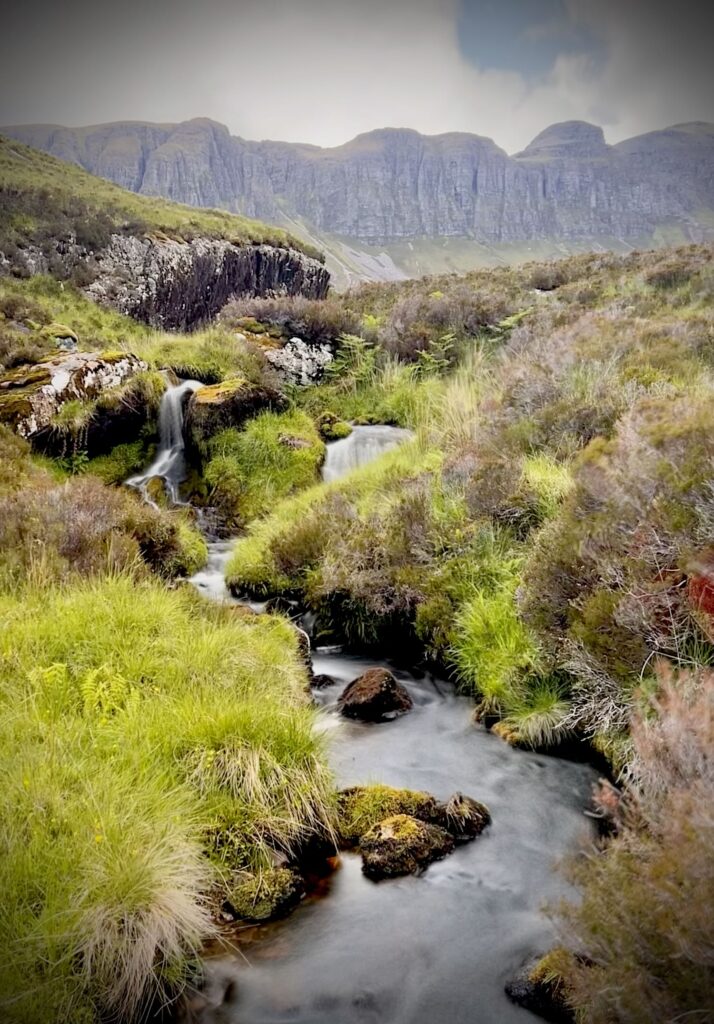

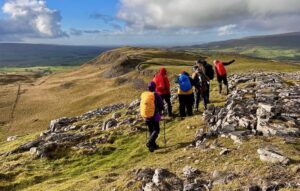
 Kylesku Hotel Restaurant & Bar, Kylesku
Kylesku Hotel Restaurant & Bar, Kylesku
Leave a Reply